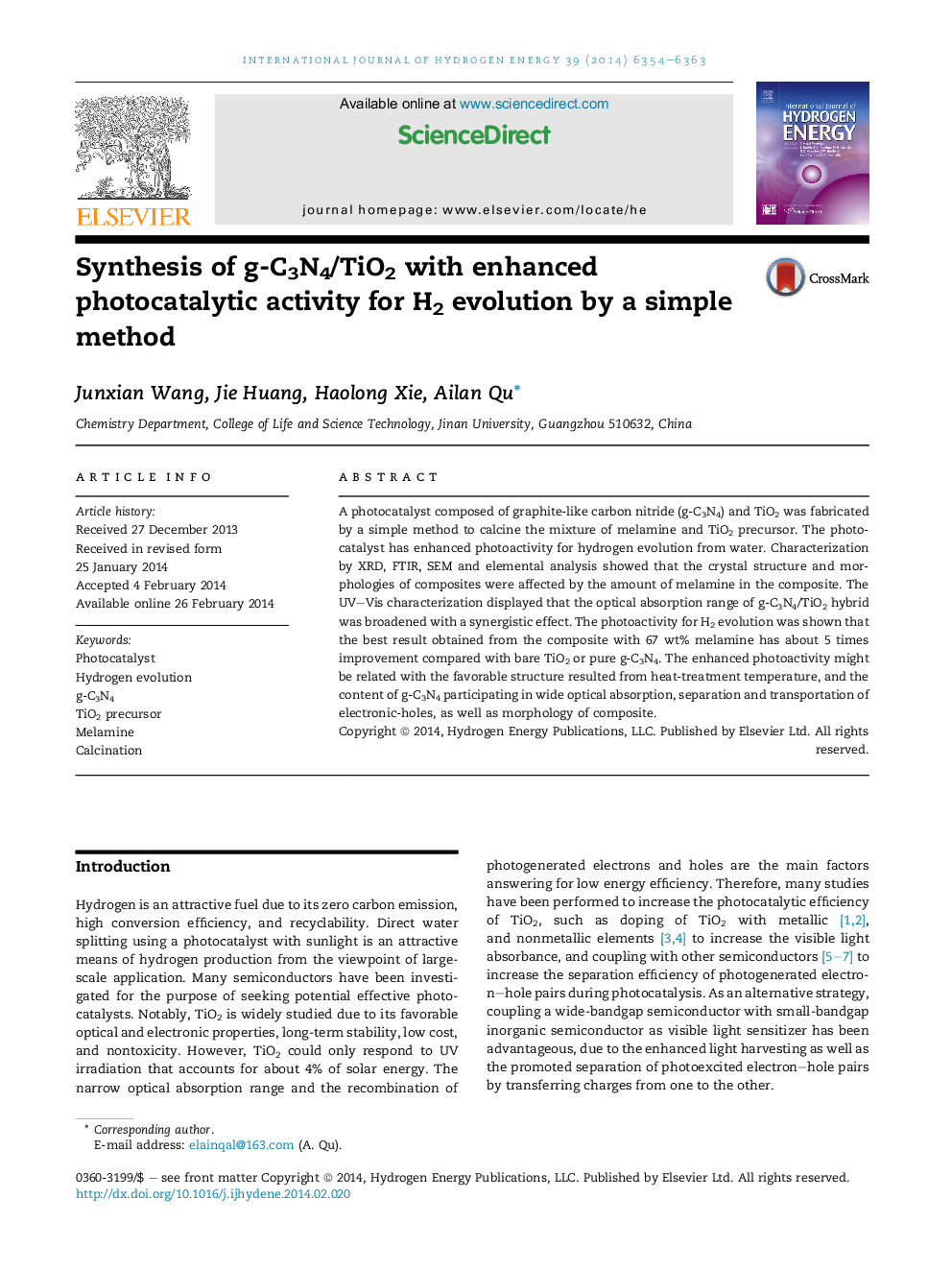| Article ID | Journal | Published Year | Pages | File Type |
|---|---|---|---|---|
| 1272828 | International Journal of Hydrogen Energy | 2014 | 10 Pages |
•g-C3N4/TiO2 was obtained by heating melamine and TiO2 precursor without inert gas.•Structure and wide UV–vis absorption enhance photocatalytic of g-C3N4/TiO2.•Temperature and ratio of melamine denote significant effect in crystal structure.•UV–vis absorption plays more important role than separation of electron–hole.•Morphology made the catalysis of g-C3N4/TiO2-75 to be lower than g-C3N4/TiO2-67.
A photocatalyst composed of graphite-like carbon nitride (g-C3N4) and TiO2 was fabricated by a simple method to calcine the mixture of melamine and TiO2 precursor. The photocatalyst has enhanced photoactivity for hydrogen evolution from water. Characterization by XRD, FTIR, SEM and elemental analysis showed that the crystal structure and morphologies of composites were affected by the amount of melamine in the composite. The UV–Vis characterization displayed that the optical absorption range of g-C3N4/TiO2 hybrid was broadened with a synergistic effect. The photoactivity for H2 evolution was shown that the best result obtained from the composite with 67 wt% melamine has about 5 times improvement compared with bare TiO2 or pure g-C3N4. The enhanced photoactivity might be related with the favorable structure resulted from heat-treatment temperature, and the content of g-C3N4 participating in wide optical absorption, separation and transportation of electronic-holes, as well as morphology of composite.
Graphical abstractFigure optionsDownload full-size imageDownload as PowerPoint slide
